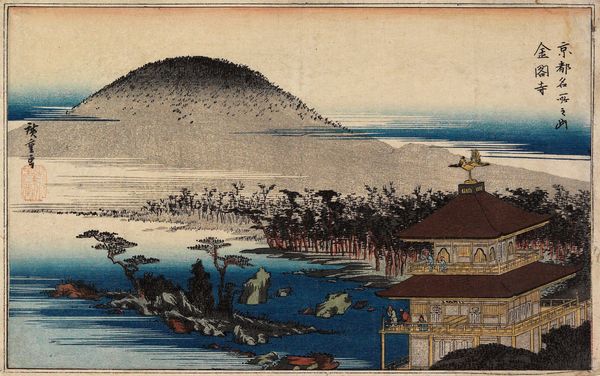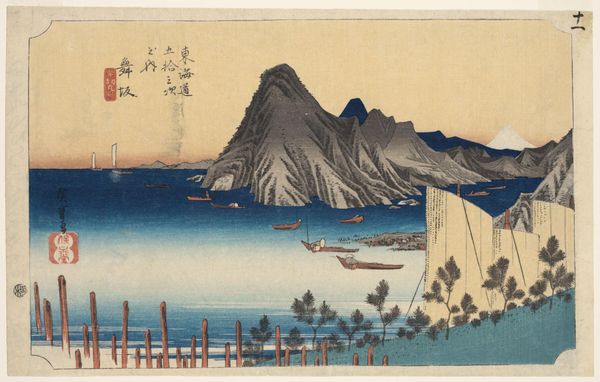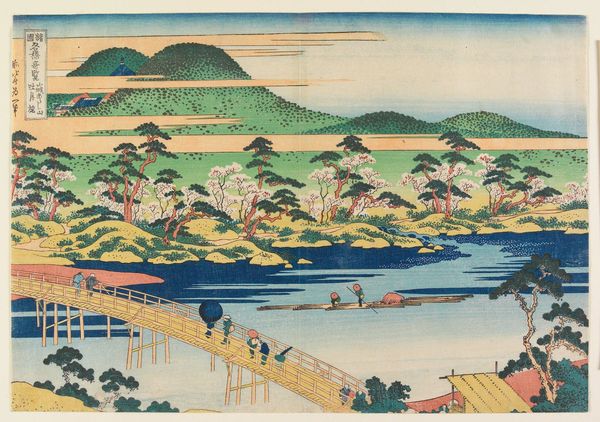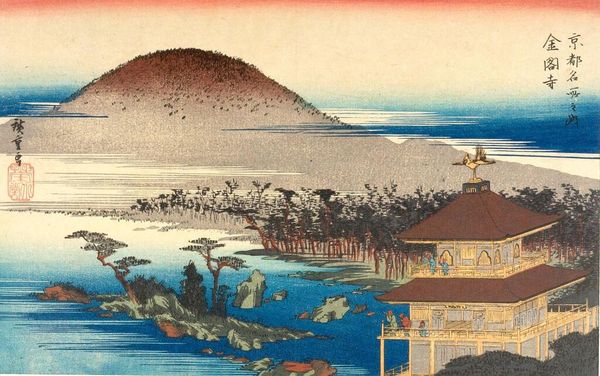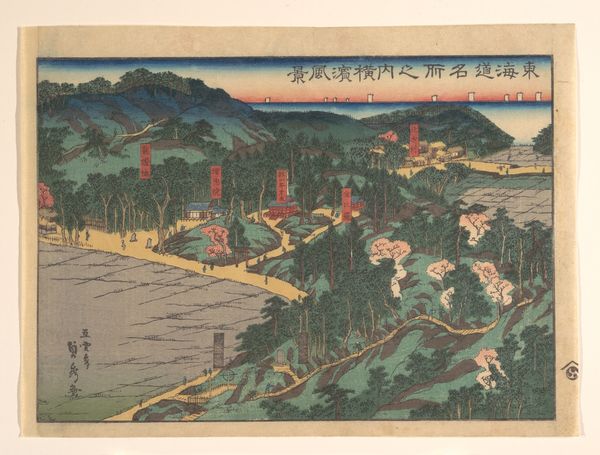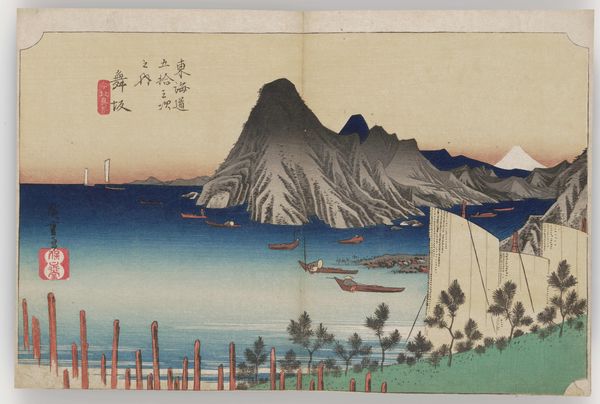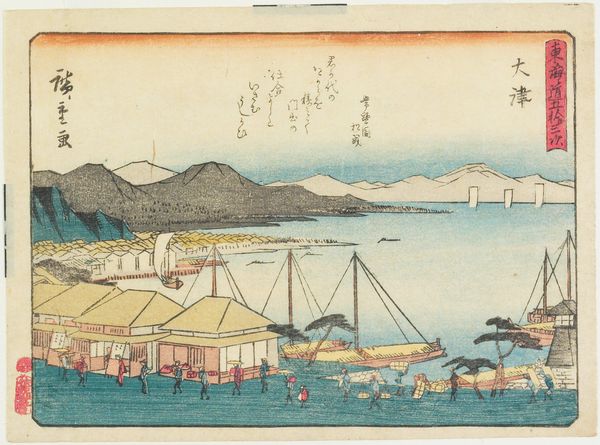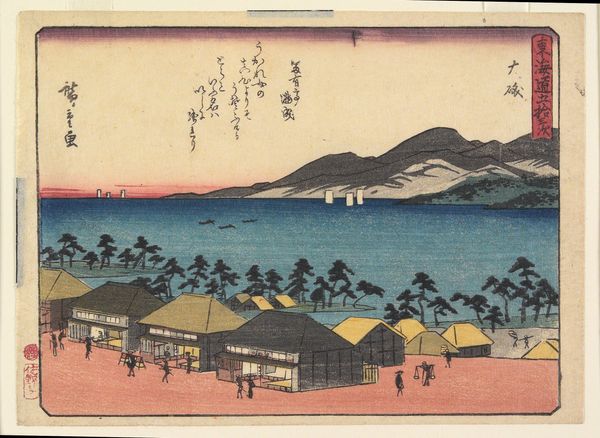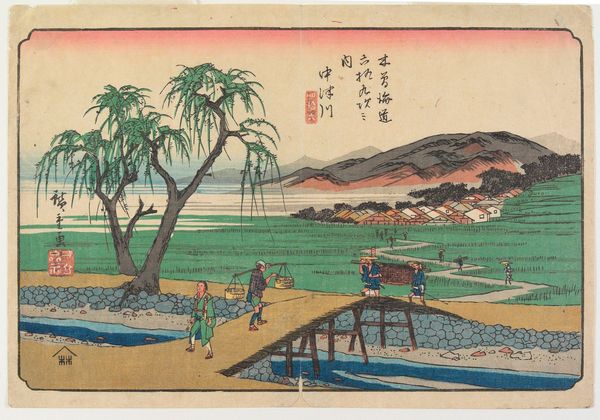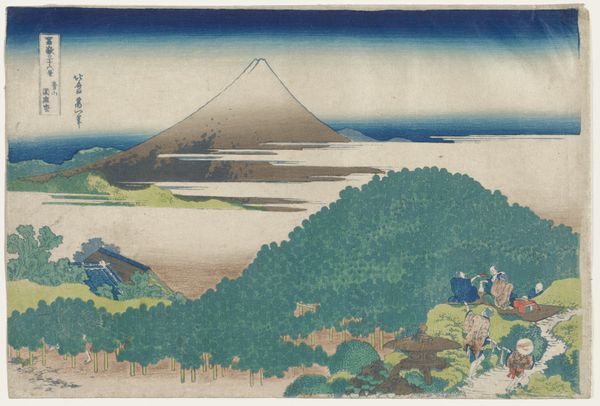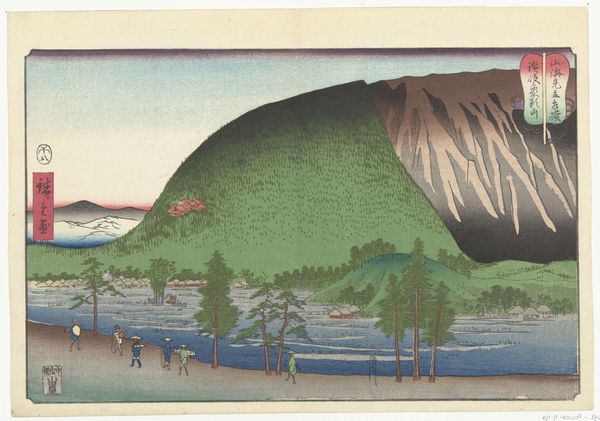
print, ink, color-on-paper, woodblock-print
#
water colours
# print
#
asian-art
#
landscape
#
ukiyo-e
#
japan
#
ink
#
color-on-paper
#
woodblock-print
#
cityscape
Dimensions: 8 1/2 × 14 1/2 in. (21.6 × 36.8 cm) (image, sheet, horizontal ōban)
Copyright: Public Domain
This print, made by Utagawa Hiroshige in 19th century Japan, depicts the Temple of the Golden Pavilion near Kyoto. Temples like this were central to Japanese cultural life, not just as religious centers but as places of community gathering. Hiroshige’s work reflects the rise of the merchant class and their growing interest in travel and leisure. Woodblock prints like this were a form of mass media, catering to this new audience. The composition, with its carefully arranged elements and tranquil mood, speaks to a desire for harmony and order, values deeply embedded in Japanese society. We see how the natural landscape – the mountain, the water, the trees – is as important as the temple itself. This reflects the Shinto belief in the sacredness of nature. As art historians, we look at prints like this not just for their aesthetic qualities but also for what they tell us about the social, economic, and religious context of their time. Researching travel guides, social commentaries, and religious texts of the period can provide a deeper understanding of this artwork.
Comments
No comments
Be the first to comment and join the conversation on the ultimate creative platform.
